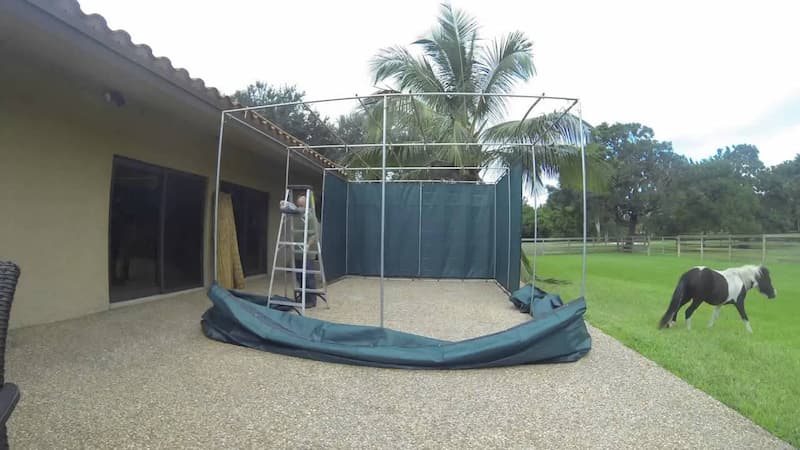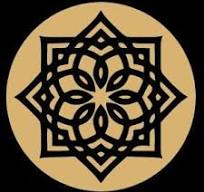Building the Sukkah
- The sukkah should be built before the holiday, but it could also be built during Hol HaMoed.
- A Sukkah built under a tree is kosher, as long as it has enough shade of its own.
- If the branches are very low and close to the Sukkah’s roof, the sekhakh can be put on top of the branches, provided that there is more sekhakh than branches.
- If the sukkah is built under a sliding roof, that roof can be closed when the sukkah is not in use and reopened on Yom Tov and Shabbat.
- If the sukkah is built under an awning, the awning can be rolled in and out on Shabbat.
- The sukkah should be able to withstand a normal wind. That means that the common wind at the location of the sukkah should not be able to lift up the whole structure and tear it from the ground.
- If the walls of the sukkah are made of fabric and they are blowing back and forth with the wind, the sukkah is kosher.
- The minimal size of the sukkah is 70X70 cm, or 28X28 inches.
- Two perpendicular walls of the minimal length, plus one of at least 4 inches, constitute a kosher sukkah.
- A fence or a guardrail around a porch or balcony can be used as a wall for the sukkah if they are at least 40 inches tall.
- A tent shaped sukkah or one with walls leaning diagonally on a house’s walls is kosher, provided that there is a minimal roof space at least 4 inches wide, and at the height of 40 inches the perimeter meets the minimal requirement of 28X28 inches.
- A round sukkah is kosher if it can contain a 28X28 inches square.
Sukkah on public property
- Restaurants often build a sukkah on the sidewalk. This is also the practice of some synagogues in dense urban areas. It is forbidden to sit in such a sukkah, unless there is a permit provided by the city for its construction. Otherwise, it is considered a stolen sukkah, since it deprives the public from using the space it is built on.
- If one said a blessing in such a sukkah, it is considered mentioning God’s name in vain.
Sekhakh and Decorations
- For the sekhakh one can use fresh branches, palm tree fronds, or bamboo mats sold at hardware and home improvement stores, including mats tied with a metal wire.
- The rods supporting the sekhakh and the sukkah frame can be made of any material, including metal.
- It is allowed to put a decorative sheet under the sekhakh, as long as it is within 16 inches of the sekhakh.
- According to one opinion in the Shulhan Arukh, if the sheet is spread on top of the sekhakh or within 16 inches under it, to protect the dwellers from the sun or falling leaves, it is kosher.
- Other decorations can hang at any length under the sekhakh.
Sukkah Activities
- One should live in the Sukkah as if it were his home, as long as he feels comfortable.
- Where climate, safety, and comfort allow it, one should sleep in the Sukkah. Comfort includes being with the family, so if some family members do not feel comfortable in the Sukkah, the others should join them at home.
- The Sephardic custom is to require eating in the sukkah only when eating bread.
- If it is raining, one does not have to sit in the Sukkah. The Ashkenazi custom is to insist on sitting in the Sukkah on the first night even if it is raining, but it could cause great discomfort, so one can choose to follow the Sephardic custom.
- Another solution for a rainy day, if it is not too cold, and if water do not drip from other parts of the Sukkah, is to cover the Sukkah with a plastic cover. This solution is not mentioned in the Mishnah and Talmud because at the time there was no easily available impermeable material.
- Covering the Sukkah with plastic to protect from rain is exactly the same as covering it with a sheet to protect from the heat, and both are allowed.
- Travelers do not have to search for Sukkah in order to eat, though some people carry with them instant or inflatable Sukkah when going on a road trip. The reason is that one should eat in the Sukkah the way he does at home. Just as he eats at a restaurant, airport terminal, in the car, or at a picnic any other day of the year without going back home, so he does in Sukkot.
The Four Species
- The lulav is kosher even if the leaves are separated and open as a fan, as long as they are not drooping to the side.
- There is no need to tie the leaves to make the lulav look like a spear, but it is customary to do so.
- It often happens that the myrtle loses its leaves during Sukkot. As long as one branch of myrtle is left, with at least three leaves growing together, it is kosher.
- If most of the leaves of the willow has fallen or dried out it needs to be replaced, but if only some leaves fell, or if the willow has only withered, it is kosher.
- Black dots on the Etrog do not render it non-kosher. The conditions mentioned in halakha which disqualify an Etrog are when it is covered with black blots, one in which large areas have dried up, became moldy, or one with an anomalous look.
- מגן אברהם, סימן תרמ, ס”ק טו: אם בא לכפר סמוך לעת האוכל אינו צריך להמתין על עשית סוכה כמו בירידת גשמים ואם הוא בשדה אפי’ כל ימי החג אינו צריך לטרוח ולעשות שם סוכה









Ohr HaChaim Yomi – Emor